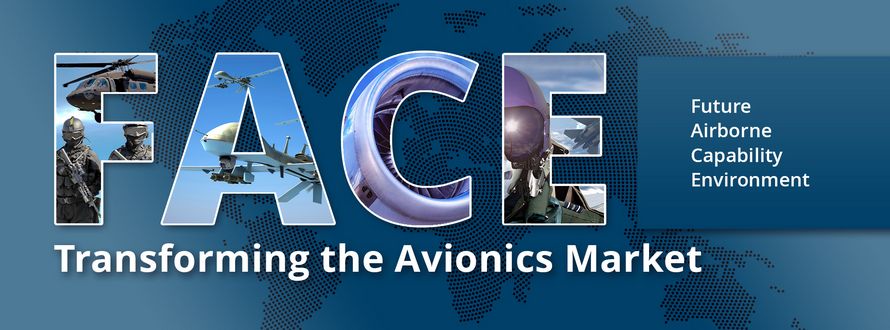
FACE: Transforming the Avionics Market
– PikeOS, Avionics & DefenseThe aviation industry, a cornerstone of global transportation and defense, continually evolves to embrace innovation and meet modern challenges. Among the significant developments in avionics is the FACE (Future Airborne Capability Environment) standard, an initiative that aims to streamline software interoperability and reduce lifecycle costs.
What is the FACE Standard?
The Future Airborne Capability Environment (FACE) standard is an initiative developed under the Open Group consortium, in collaboration with the U.S. Department of Defense (DoD). Its primary goal is to establish an open, modular architecture for airborne systems. FACE promotes interoperability by enabling the reuse of software components across different platforms, reducing the time, cost, and risk associated with the development and certification of avionics systems.
FACE is not a single specification but a set of standards, processes, and guidance that address software development for avionics. These standards focus on portability, maintainability, and the ability to integrate with existing systems seamlessly. The FACE Technical Standard defines five key domains:
- Operating System Segment (OSS): Manages the interaction between hardware and software
- Transport Services Segment (TSS): Handles communication between software components
- Platform-Specific Services Segment (PSSS): Provides platform-specific functionalities like I/O operations
- Portable Component Segment (PCS): Contains reusable software components
- I/O Services Segment (IOS): Interfaces with external devices
In tandem with FACE, the Modular Open Systems Approach (MOSA)—mandated by U.S. law for major defense programs—provides the overarching architectural framework for designing interoperable, future-proof systems.
Why is FACE important?
- Cost Reduction and Efficiency: Traditionally, avionics software development has been siloed, with each platform requiring bespoke solutions. This approach is costly and time-consuming, especially given the rigorous certification requirements for safety-critical systems. The FACE standard reduces these inefficiencies by enabling software reuse across platforms. A single FACE-compliant component can be certified once and deployed across multiple systems, significantly lowering development and maintenance costs.
- Enhanced Interoperability: Modern military and commercial aviation systems rely on the seamless integration of various subsystems. FACE provides a framework for standardizing interfaces and communication protocols, ensuring that components from different vendors can work together without requiring extensive modifications.
- Future-Proofing Avionics Systems: The aviation industry faces rapid technological evolution, with new sensors, processors, and communication technologies emerging regularly. FACE’s modular architecture ensures that systems can be updated or upgraded without overhauling the entire platform, enabling technology insertion at a reduced cost and risk.
- Enabling Robust Security Architectures: Security is paramount in avionics, particularly in defense applications. While FACE does not certify security directly, it enables robust architectures—such as Multilevel Security (MLS)—by supporting strict partitioning, secure communications, and standardized integration points. This reduces proprietary dependencies and makes it easier to implement security measures effectively.
- Global and Civil Relevance: FACE is publicly available and is seeing increasing adoption internationally. NATO countries and civilian aerospace vendors are exploring how to integrate FACE with certification frameworks like DO-178C and ED-12C, making it a versatile standard for both defense and civil aviation markets.
Challenges in adopting FACE
While the FACE standard offers numerous benefits, its implementation is not without challenges:
- Complexity of Legacy Systems: Many aviation platforms, especially in defense, rely on legacy systems with proprietary architectures. Retrofitting these systems to be FACE-compliant is a formidable challenge, as it requires extensive re-engineering and certification.
- Certification Bottlenecks: Safety-critical avionics systems must adhere to stringent certification standards such as DO-178C for software and DO-254 for hardware. Ensuring that FACE-compliant components meet these standards adds another layer of complexity. The interaction between FACE certification and traditional safety standards is an area of ongoing effort.
- Vendor Collaboration: FACE promotes an open ecosystem, which requires collaboration among traditionally competitive vendors. Aligning on standards, sharing intellectual property, and ensuring interoperability require significant coordination and trust.
- Skill Gaps: Developing FACE-compliant systems demands expertise in modular architectures, safety certification, and real-time systems. Bridging the skill gap in the workforce is essential for widespread adoption.
SYSGO: Pioneering FACE Certification and RTOS Solutions
One of the leading players in the FACE ecosystem is SYSGO, a European software company specializing in safety-critical systems. With decades of experience in avionics, SYSGO has been at the forefront of providing solutions that align with the FACE standard while meeting stringent safety and certification requirements.
SYSGO’s flagship product, PikeOS, is a Real-Time Operating System (RTOS) and hypervisor designed specifically for safety-critical and mission-critical systems. PikeOS supports FACE compliance by providing:
- Partitioned Architecture: PikeOS uses a microkernel-based architecture to separate applications into secure, isolated partitions. This ensures that one application cannot interfere with another, enhancing safety and security.
- FACE Certification Evidence: SYSGO offers pre-certified artifacts that accelerate the certification process, helping developers achieve DO-178C and FACE compliance more efficiently.
- Multi-Core Support: PikeOS optimizes multi-core processors, a critical feature for modern avionics platforms that demand high computational performance.
- Flexible Integration: Its modular design allows seamless integration with other FACE-compliant components, ensuring interoperability across systems.
SYSGO’s deep expertise in safety certification, particularly in avionics, makes it a trusted partner for organizations adopting the FACE standard. The company provides comprehensive support for achieving compliance with DO-178C, FACE, and other relevant standards, reducing the time and effort required for certification.
Conclusion and Outlook
The FACE standard represents a transformative shift in the avionics market, addressing long-standing challenges of interoperability, cost, and efficiency. By enabling the reuse of software components across platforms and fostering collaboration among vendors, FACE is setting the stage for a new era of innovation and sustainability in aviation.
Adoption, however, comes with challenges—from integrating legacy systems to aligning with complex certification regimes. Yet with organizations like SYSGO offering compliant solutions and certification-ready platforms, these barriers are being steadily reduced.
Looking ahead, FACE’s integration into open architecture ecosystems—alongside MOSA, DO-178C, and international frameworks—promises a future where avionics systems are not only smarter and safer but also more adaptable and cost-effective. As adoption grows, tools like the FACE Registry—a searchable marketplace of certified components—will further streamline procurement and innovation across the industry.
-
Previous
-
Next

 Twitter
Twitter LinkedIn
LinkedIn Facebook
Facebook Reddit
Reddit RSS
RSS Copy link
Copy link
